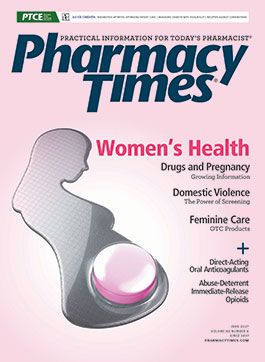Publication
Article
Pharmacy Times
Case Studies (June 2017)
Author(s):
What should these pharmacists do?
CASE 1
HC is a 75-year-old man who comes to your pharmacy with a prescription for hydrocodone/acetaminophen 5 mg/500 mg (1-3 times daily as needed). He has been experiencing bothersome lower back pain for a few months now, and his pain has not been relieved by superficial heat application. HC has a history of hypertension (treated with lisinopril 20 mg and amlodipine 5 mg) and hyperlipidemia (treated with simvastatin 20 mg). He states he rarely takes OTC medications except acetaminophen occasionally at night to help him sleep.
As the pharmacist, what are your thoughts on HC’s prescription for hydrocodone/ acetaminophen?
CASE 2
You receive a call from HC’s primary care doctor, who tells you that she heeded your prior advice and started HC on meloxicam 7.5 mg once daily instead of the hydrocodone/acetaminophen while also prescribing him a skeletal muscle relaxant (cyclobenzaprine 10 mg). She explains that HC’s pain has improved from a score of 6 to a 3 on a 10-point pain scale and informs you HC has taken up tai chi as a form on nonpharmacologic pain management. Other than the meloxicam and cyclobenzaprine, there have been no additional changes to HC’s medication profile. HC’s doctor, impressed by your knowledge of guidelines and your earlier recommendation, asks your opinion about starting tramadol for HC’s chronic lower back pain.
What would be your recommendation regarding tramadol for HC’s chronic lower back pain at this time?SEE THE ANSWERS ON PAGE 2. ANSWERSCASE 1: Lower back pain is one of the most common reasons for physician visits in the United States. Acute back pain is typically defined as lasting less than 4 weeks, subacute back pain is defined as lasting 4 to 12 weeks, and chronic back pain is defined as lasting more than 12 weeks. Up to one-third of patients report persistent back pain of at least moderate intensity 1 year after an acute episode and 20% report substantial limitations in daily activities. According to recent clinical practice guidelines from the American College of Physicians (ACP), patients with subacute or chronic lower back pain should first - try nonpharmacologic treatments, such as superficial heat, massage, acupunc ture, or spinal manipulation. If these fail to adequately relive pain symptoms, clinicians and patients then should consider pharmacologic treatment with nonsteroidal anti-inflammatory drugs (NSAIDs) as first-line therapy. Opioids should be reserved for patients who have first failed nonpharmacologic and nonopioid treatment strategies because they are associated with substantial harms and risk of abuse. The pharmacist might consider contacting HC’s prescriber to discuss holding off on the use of an opioid until HC has first tried a NSAID. Additionally, because NSAIDs are associated with gastrointestinal and renal risks, the pharmacist should recommend that the prescriber use the lowest effective NSAID dose for the shortest period of time necessary. HC appears to be implementing nonpharmacologic treatment (tai chi)
CASE 2: HC appears to be implementing nonpharmacologic treatment (tai chi) for his chronic lower back pain and has seen some, although not adequate, benefit from his meloxicam and cyclobenzaprine. ACP guidelines recommend either tramadol or duloxetine as second-line therapies following nonpharmacologic strategies and NSAIDs/muscle relaxants. Therefore, tramadol would seem to be a reasonable next step in the management of HC’s lower back pain. - As the pharmacist, you could recommend tramadol be started at 25 mg ev ery morning and titrated in 25 mg increments as separate doses every 3 days to reach 100 mg/day (25 mg 4 times daily). After that, HC’s total daily dose could be increased by 50 mg every 3 days or so to reach 200 mg/ day divided into 4 daily doses.
Dr. Coleman is a professor at the University of Connecticut School of Pharmacy in Storrs, Connecticut.







